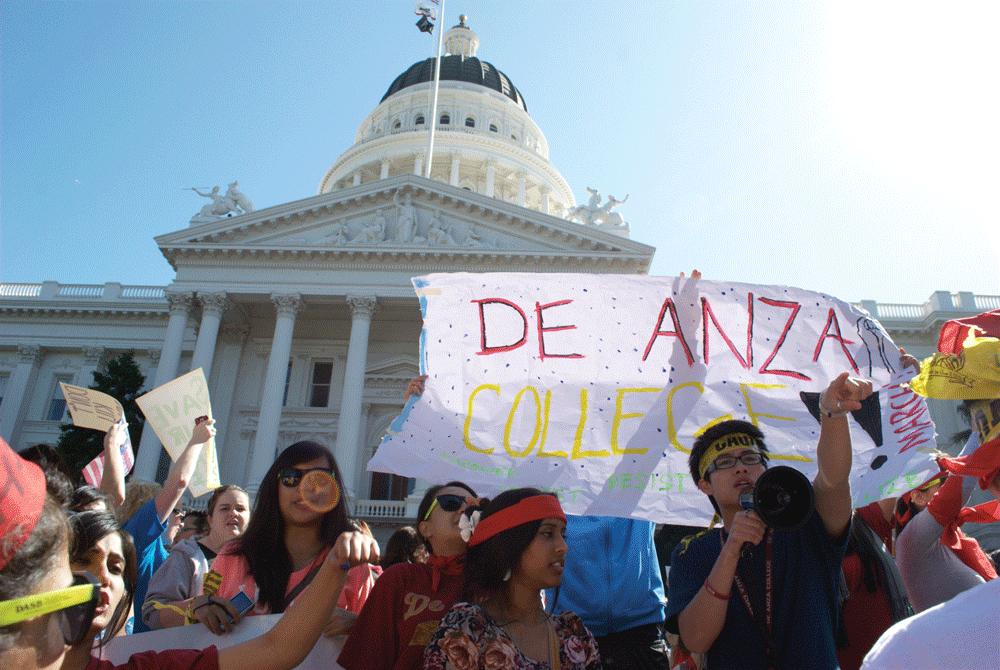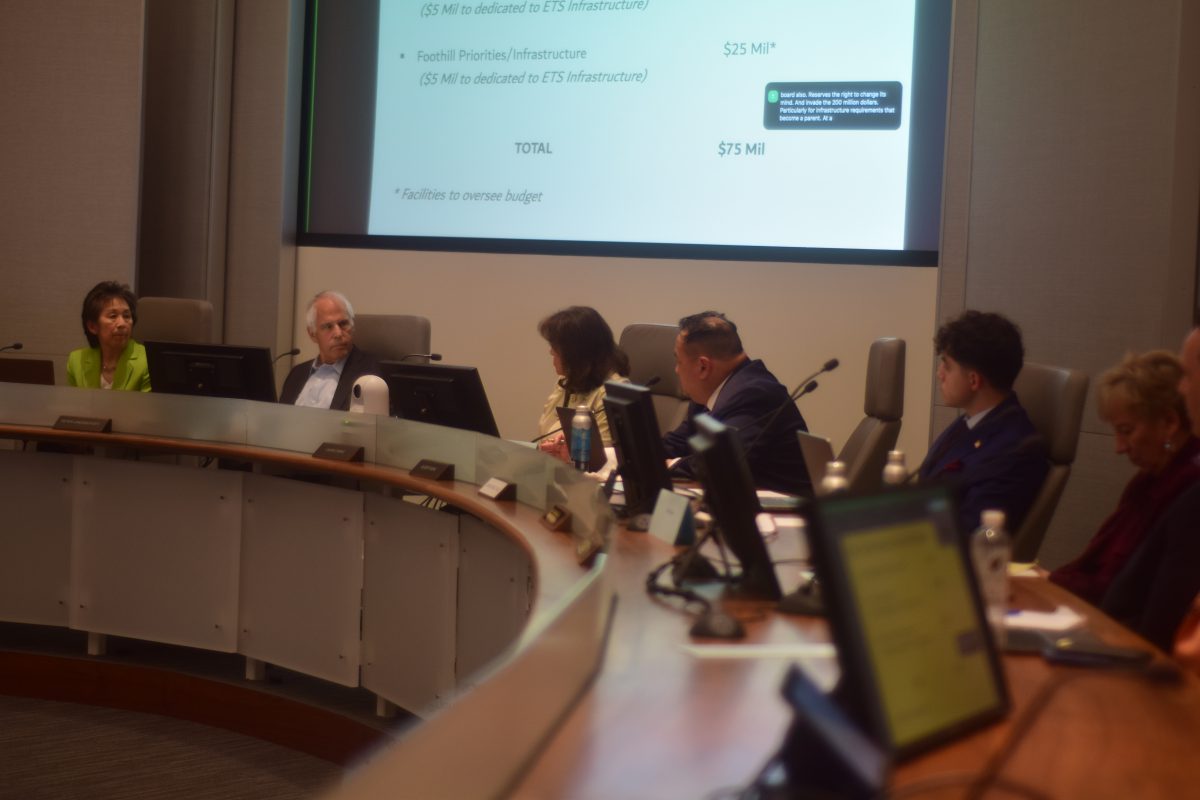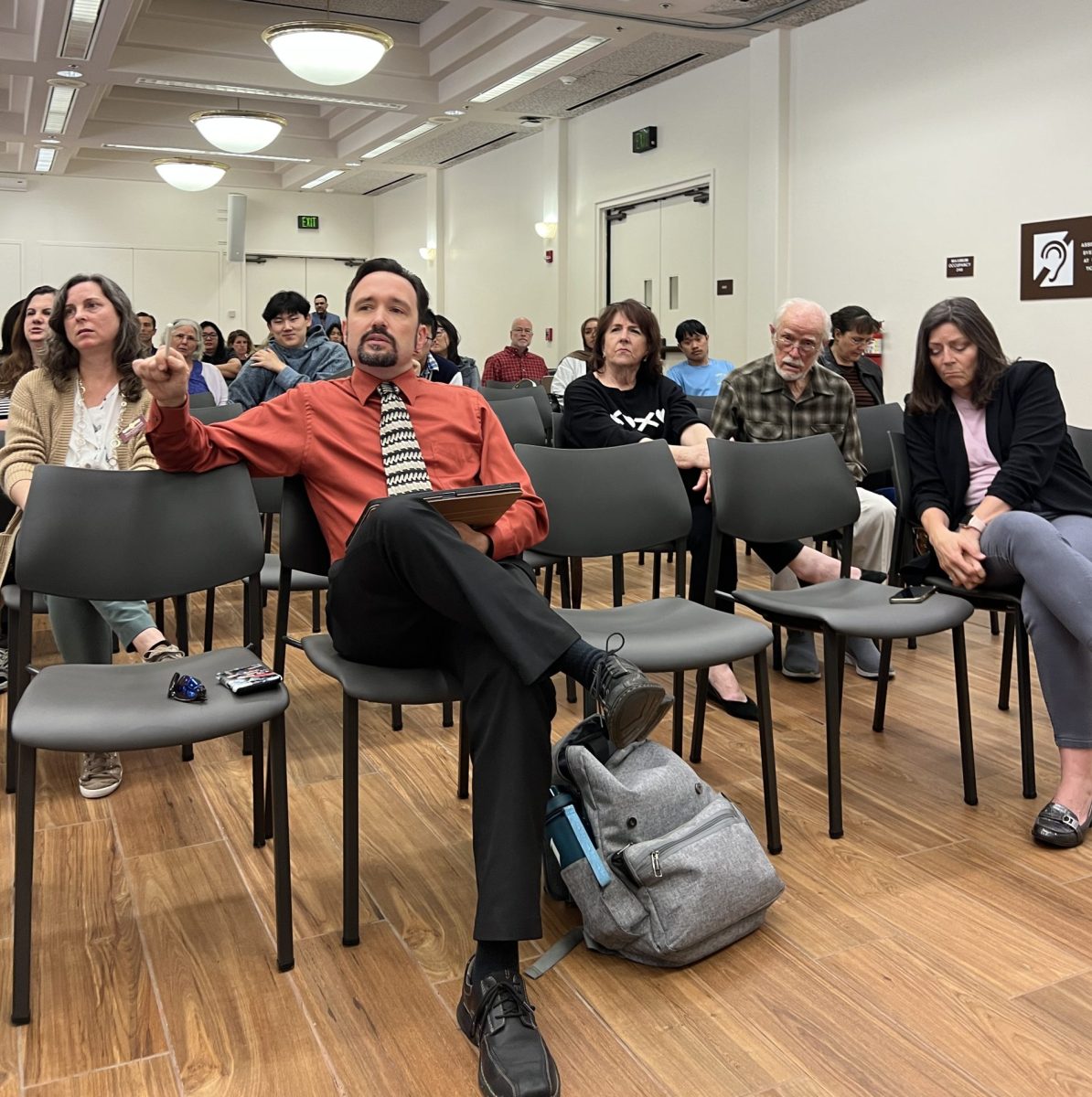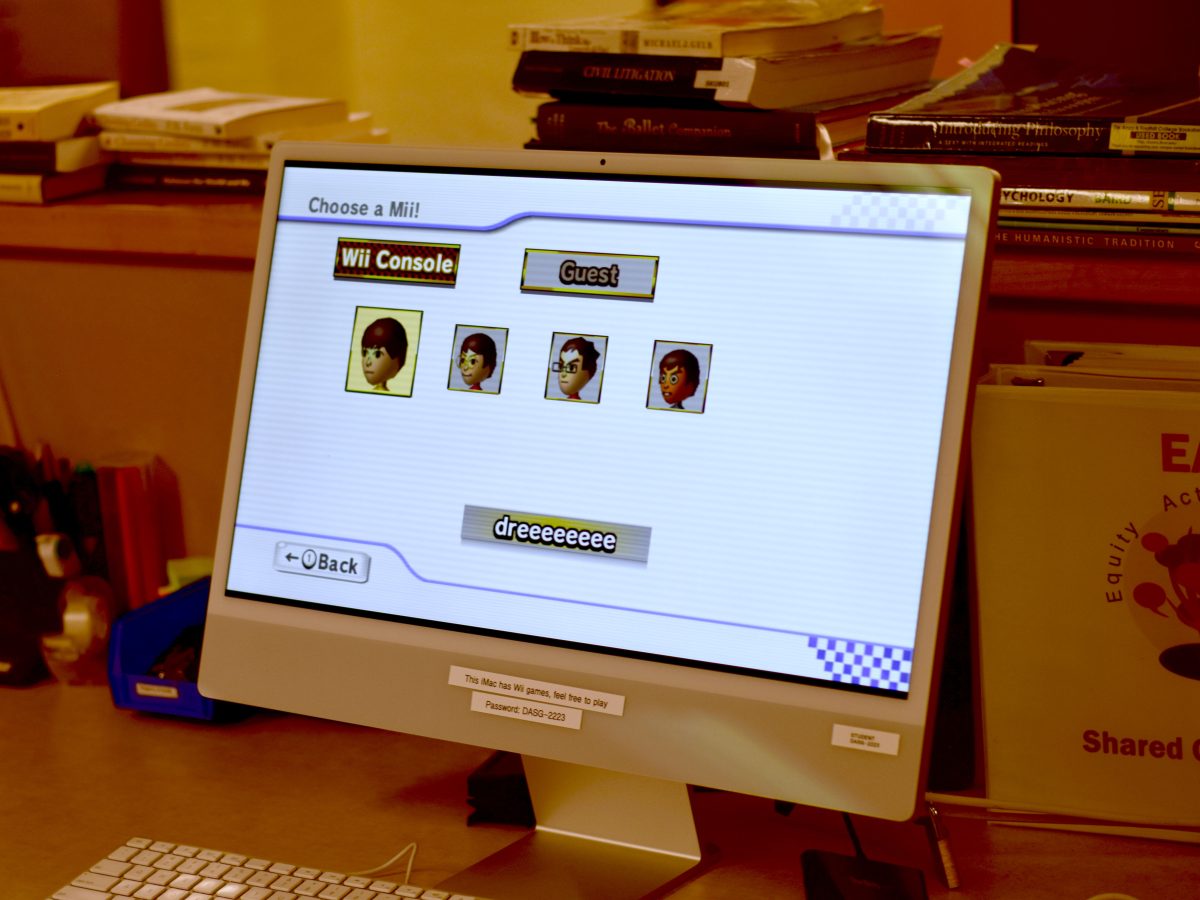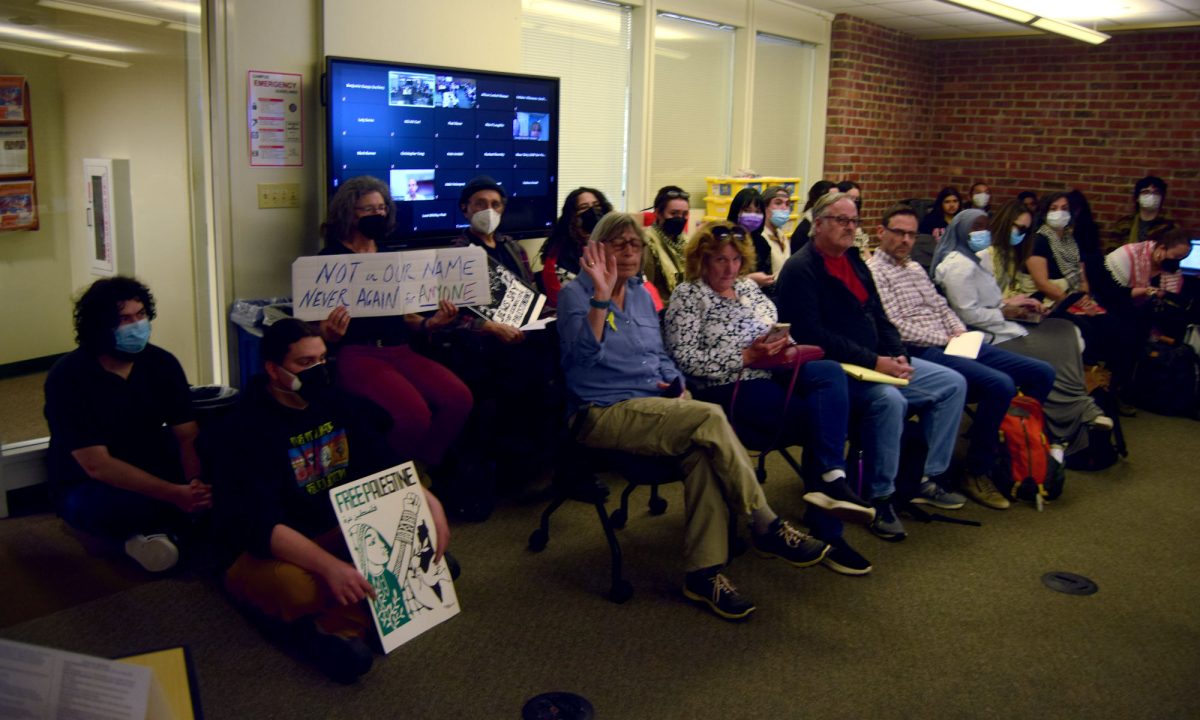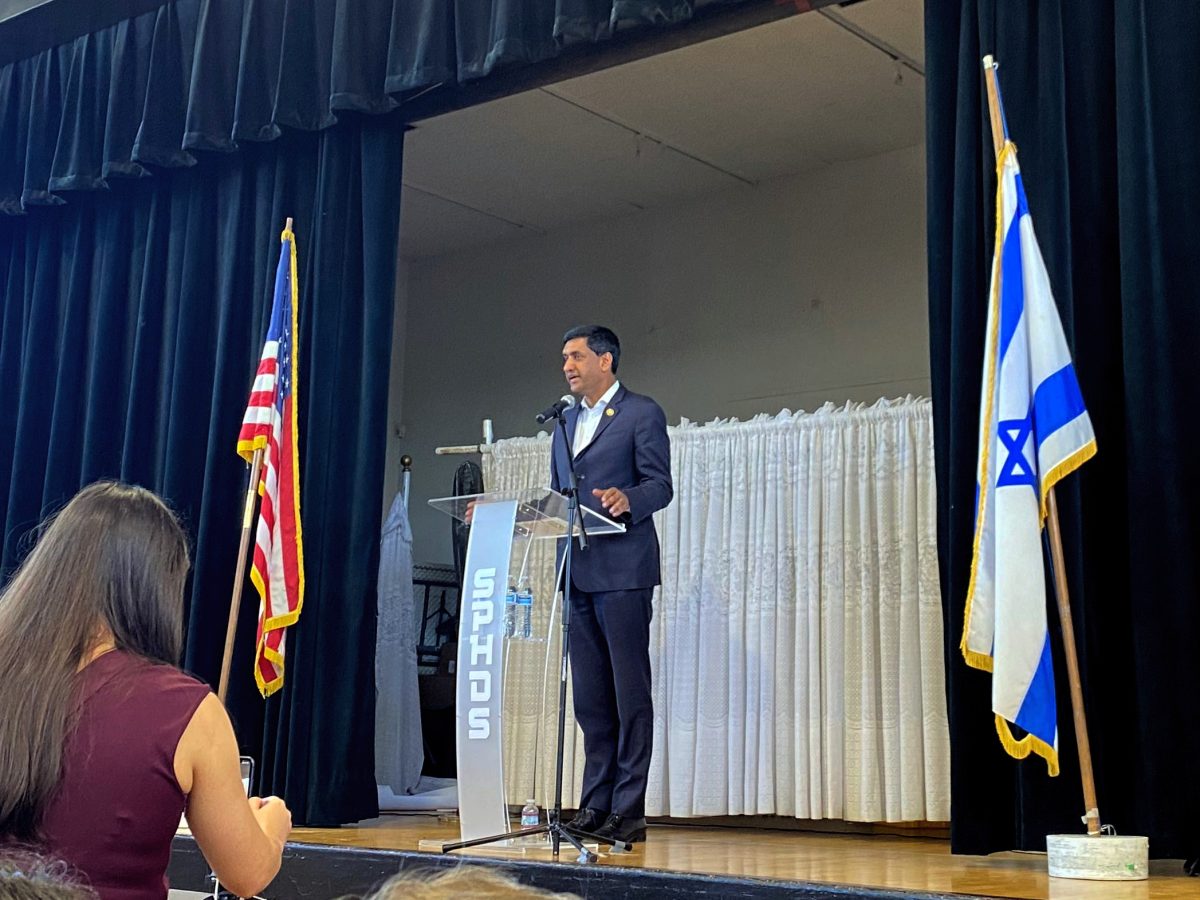“You’re on another level,” said DASB senator Meera Suresh, describing her experience of marching with thousands of other students on March 5 in Sacramento.
Around 300 De Anza College students joined thousands of students, faculty, and staff from colleges across the state for the March in March at the Capitol to protest tuition hikes and budget cuts to education. Demonstrators marched over a mile from Southside park to the Capitol, chanting and waving signs as onlookers from neighboring homes and offices watched the lively but orderly demonstration.
Protesters also entered the Capitol building to meet with legislators and more than 300 people took part in the Occupy Sacramento protest, which was not endorsed by the main college student associations. Sixty-six people were arrested after 7:30 p.m. for trespassing on public property after normal business hours.
Several student leaders and state politicians addressed the crowd.
Ohlone student trustee and president of the Student Senate of California Community Colleges Kevin Feliciano was one of the first speakers.
“We’re all here to tell our legislators to fund our future,” Feliciano said, before asking the crowd if they personally knew anybody who had dropped out of school due to rising costs, eliciting a loud response.
Assembly Speaker John A. Perez (D – Los Angeles) told protesters they were sending a “powerful message” to the legislature that “we have to keep the promise to a sensible, affordable higher education for everyone in the state of California.”
Shortly after those remarks, he was briefly drowned out by a sizable group of protesters chanting “show us, show us, show us.” Protesters on the steps near Perez waved their hands, motioning the chanters to cease.
Another speaker was president pro tem of the California state senate Darrell Steinberg.
“We have cut billions of dollars and I have hated every minute of it,” he said.
Like Perez, he was briefly drowned out by some protesters chanting “show us, show us,” but he acknowledged them.
“We have to show you. You’re right, you’re right,” he said.
He mentioned bills he was supporting, echoing Perez’s support for ending a corporate tax break and also bills Steinberg proposed that would force colleges to use open source textbooks, not costing more than $20. for the most widely taken lower division courses.
“It should not cost $1,200 to buy a set of textbooks for a year,” he said.
Students lobby legislators
Even while speakers were addressing the rally, protesters lined up to enter the Capitol to either lobby legislators or take part in the Occupy Sacramento protest.
De Anza student trustee Emily Kinner met Assemblyman Jim Beall (D-San Jose) for an hour with seven other De Anza students and students from San Jose City College, Los Angeles Mission College and College of Alameda.
Kinner said Beall talked about proposed bills he supported, including one to limit textbook costs, the middle class scholarship bill, a tax on millionaires and changing the current 2/3 majority requirement for passing tax increases at the local and state level.
Kinner said she was skeptical about the impact the march would have, but felt this year’s march and student lobbying were effective and even contributed to a recent assembly subcommittee rejection of Gov. Jerry Brown’s proposed tightening of Cal Grant eligibility.
“My perception has changed very much about the effectiveness of the march and that medium of advocacy,” she said.
Suresh met with aides to assemblyman Richard Gordon (D – Menlo Park) and state senator Elaine Alquist (D – San Jose). Suresh said she learned details about how the state budget operates that gave her a greater understanding of how legislators choose where to allocate funds. Suresh said aides of both Gordon and Alquist offered to set up dates for the politicians to visit De Anza to meet with students.
Foothill students Amoriah Hartley, Timoth Wan, and Shanee Rodell personally met with Gordon. They spoke to him about budget cuts to several programs, including financial aid program EOPS and CalWorks, which provides assistance for child care.
“I’m a single parent and going to school full time and need the CalWorks,” said Rodell, a 29-year-old psychology major.
“I told him my story about being a financial aid recipient,” said Hartley, who is studying social work. “How hard it is, how hard it would be if it was cut.”
The group left with a positive impression of Gordon and said he offered to come to Foothill to hear students’ concerns.
Foothill student trustee Stephanie Mcgee and former student trustee Etienne Bowie were outside Gordon’s office to meet with him as well. Mcgee said it was tough to tell students there was little the student government and administrators could do about the budget cuts.
“We’re basically currently powerless,” Mcgee said. “All we can do is stand up and advocate and let [legislators] know everything that is taken from you (students), there is still need for it.”
Bowie called this year one of the “most serious” in recent times. He said administrators and central services employees he worked with worry about more budget cuts.
“We are really in fear of cutting into the bone,” Bowie said. “Not just the meat of what we do, but the bone, the whole main structure.”
Getting ready to march
De Anza buses arrived at the staging area at Southside park, one mile from the Capitol, around 9 a.m. Hundreds of students from other schools were already there and the sound of chants and drums filled the air.
“I got your back, holla back,” chanted a group of UC Irvine students.
“They say cut back, we say fight back,” another group of students chanted.
De Anza had one of the larger contingents and soon became one of the louder groups at the staging area. Popular chants included “No cuts, no fees, education should be free,” “students united, will never be divided” and “banks got bailed out, schools got sold out.”
While the atmosphere was generally lively, there was a brief lull when a “peacekeeper” asked students to keep the noise down because a neighboring home was observing a funeral. While a few people expressed displeasure at the request, most students complied and the noise died down for a few minutes.
Harrison Wills, student body president from Santa Monica College, attempted to organize an Occupy style general assembly in the staging area but did not receive much support. He said top-down planning was responsible for current problems and the Student Senate for California Community Colleges played too central a planning role in the March in March. He said a general assembly “lifts every voice.”
“If everyone’s empowered ideas start coming up that are new, (that) we never heard of,” Will said.
An early morning
With buses leaving at 6:30 am to make the two hour drive to Sacramento, the day started early for De Anza students.
For many De Anza students, the protest was the first political rally they had been to.
“I’ve never experienced protesting or anything, so that will be a first time, good experience,” said Susan Aguirre, an 18-year-old business major, during the bus ride up. “I want to be a part of something.”
Besides being personally affected by tuition hikes, some students said concern for future generations’ ability to get a higher education was their main motivation.
“It’s really important for generations to come,” Shri Raval, a 29 year-old child development major, said. “Because at the end of the day, I want to make sure my friends’ … kids can have a good, cheap college.”
Marine veteran Ruben Valles said government assistance means he’s not affected by tuition hikes, but that he was going to support fellow students.
“I don’t see a reason why anybody else should have to pay a higher tuition cost,” he said. “It’s insane.”
Sitting next to Valles was 21-year-old paralegal student Nikolay Shurygin. He also said he wasn’t affected by tuition hikes, but said the purpose of community college is to allow low-income and unemployed people to better themselves.
“If we have a community college that the people who need it can’t afford, then what’s the point?” he said.
Most students interviewed said they were receiving extra credit, but the majority said it was not their main motivation for going to the protest.



